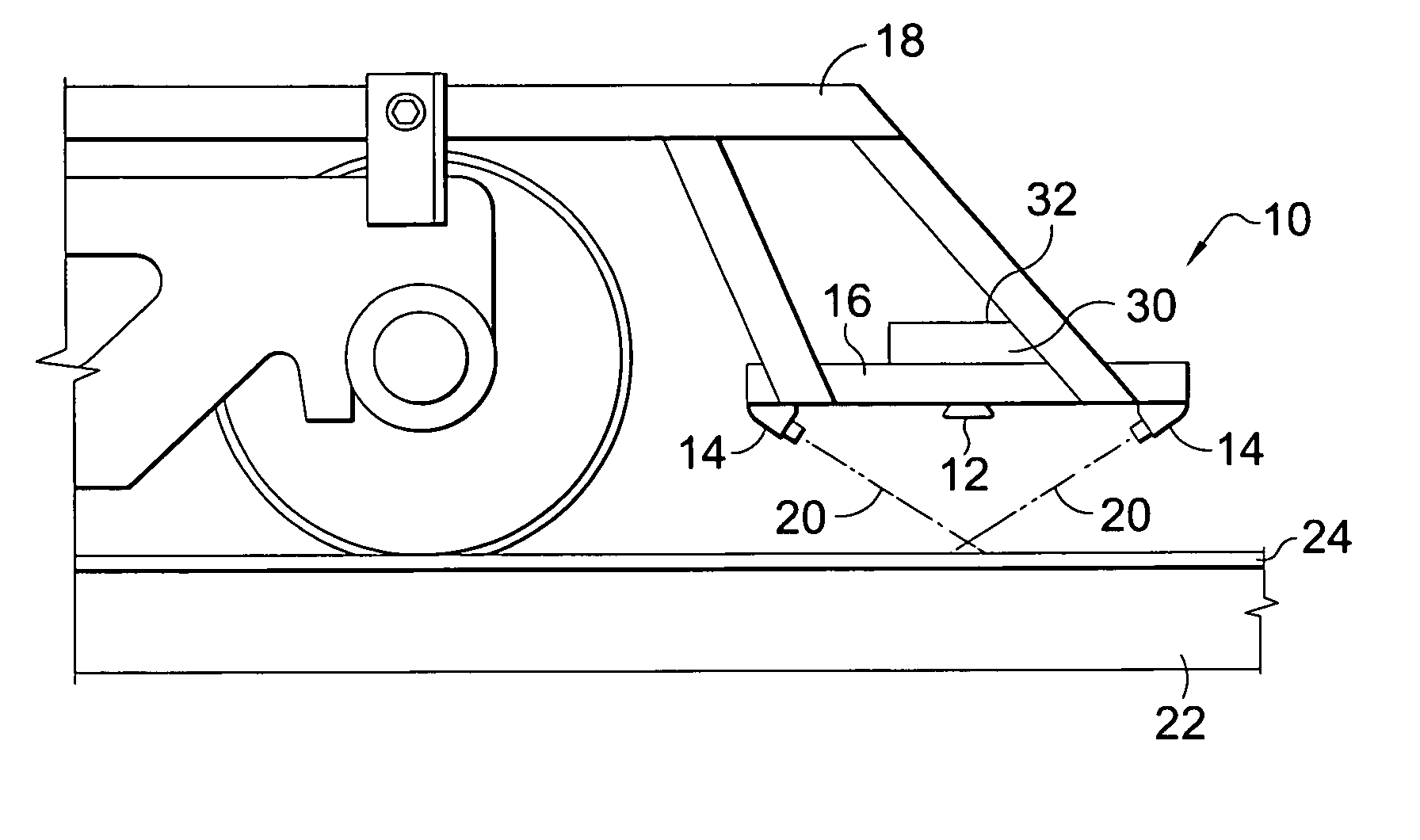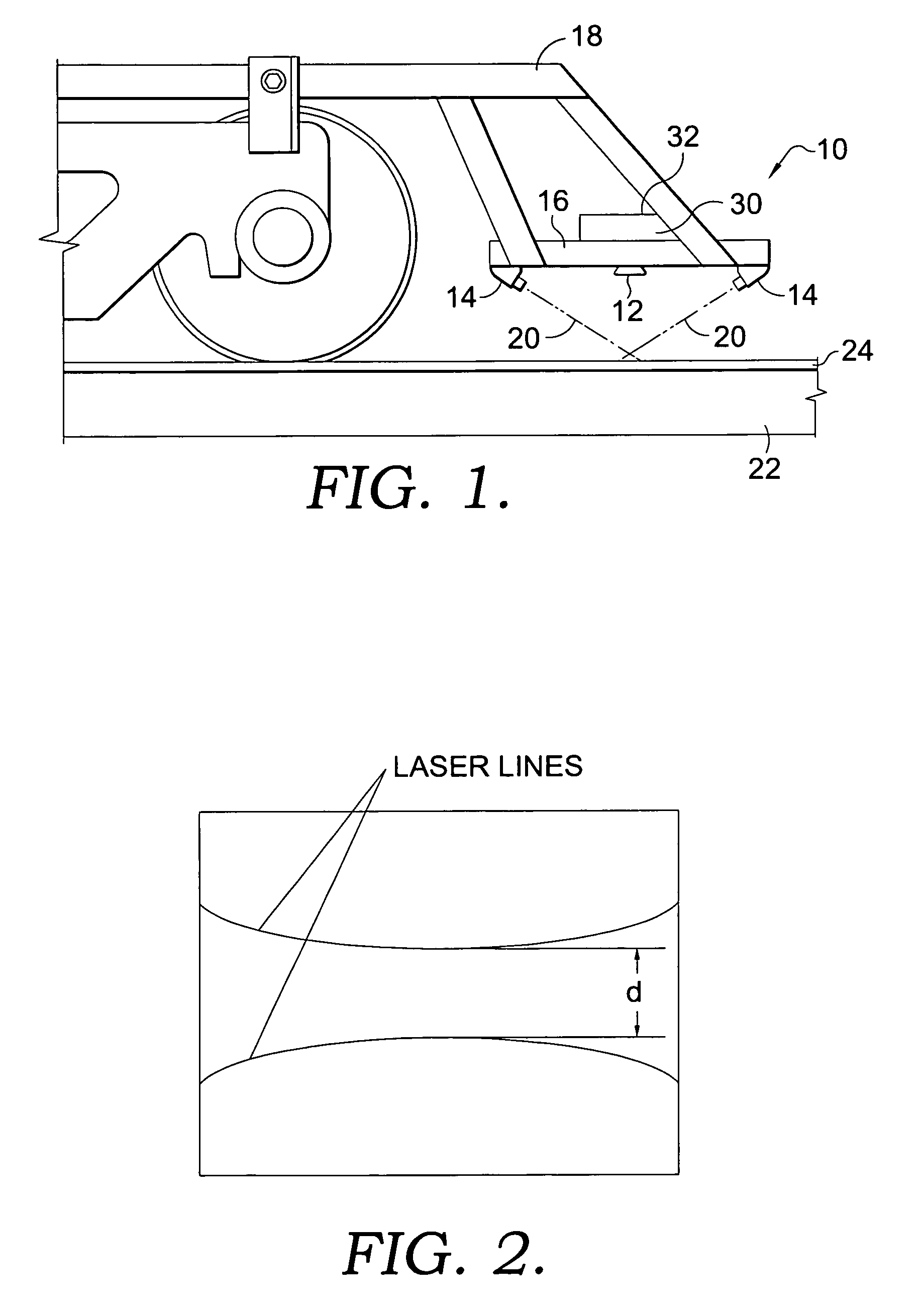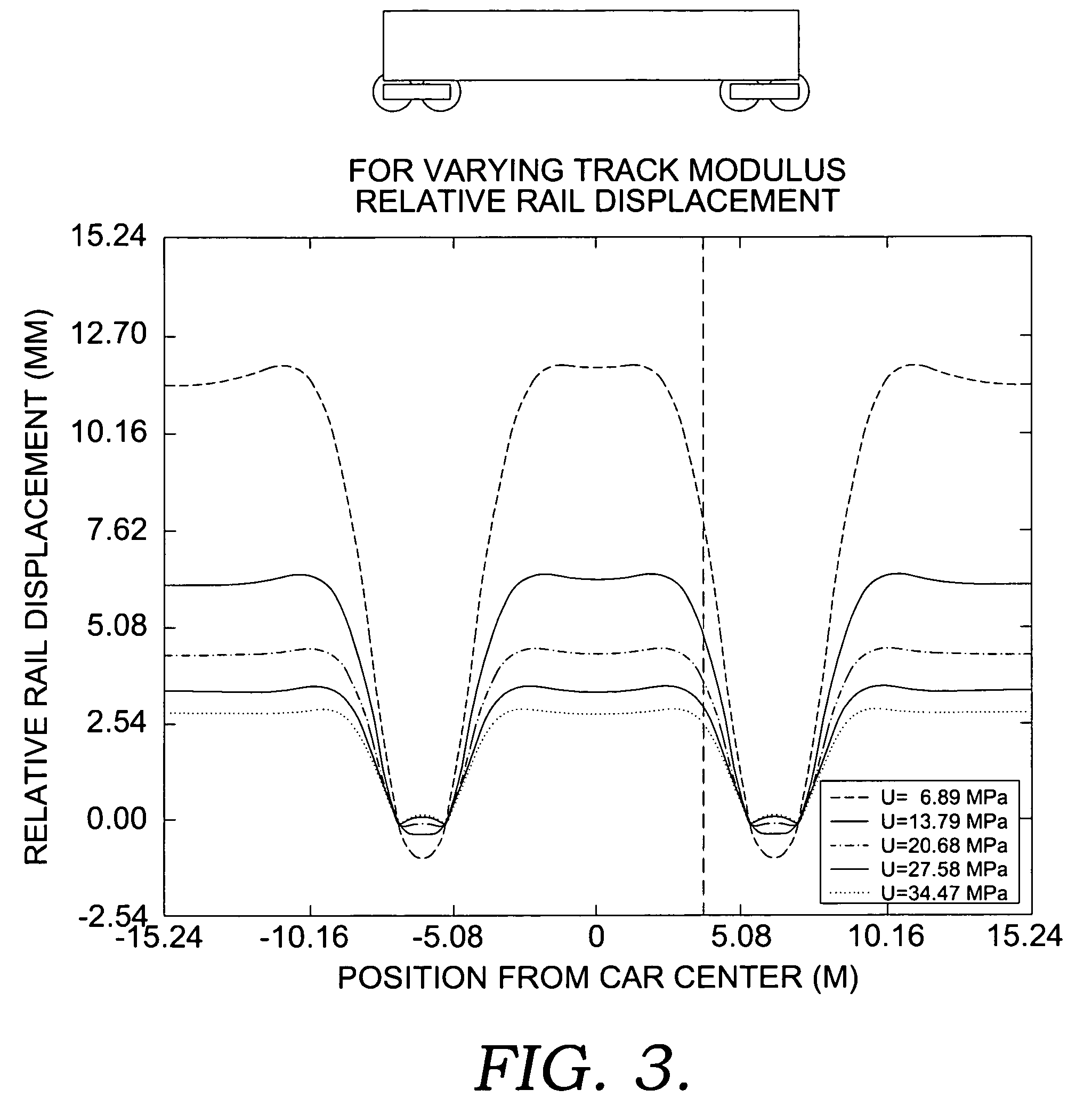Method and apparatus for noncontact relative rail displacement, track modulus and stiffness measurement by a moving rail vehicle
a technology of relative rail displacement and track modulus, which is applied in the direction of railway auxilary equipment, instruments, transportation and packaging, etc., can solve the problems of increasing maintenance needs, reducing the life of track components, and low track modulus and large variations in track modulus
- Summary
- Abstract
- Description
- Claims
- Application Information
AI Technical Summary
Problems solved by technology
Method used
Image
Examples
Embodiment Construction
[0043]FIG. 1 illustrates the on-board, noncontact measurement system 10 of the present invention. The system 10 measures vertical track displacement relative to the wheel-and-rail contact point and these relative measurements are combined with an analytical model of the track structure and the measured vehicle loads (weight and dynamic forces) to estimate the vertical track modulus and track stiffness for the track. Vertical track stiffness is the ratio of applied load to displacement and includes the effects from rail, subgrade, ballast, subballast, ties, and fasteners. Vertical track modulus generally does not include the effects of the rail.
[0044]The system 10 comprises a digital vision system 12, a means for measuring the vertical distance between a position on the rail vehicle and the upper surface of the rail 14, and a data processor (not shown). The digital vision system is preferably a digital video camera having a storage device for recording the images. As shown in FIG. 1,...
PUM
 Login to View More
Login to View More Abstract
Description
Claims
Application Information
 Login to View More
Login to View More - R&D
- Intellectual Property
- Life Sciences
- Materials
- Tech Scout
- Unparalleled Data Quality
- Higher Quality Content
- 60% Fewer Hallucinations
Browse by: Latest US Patents, China's latest patents, Technical Efficacy Thesaurus, Application Domain, Technology Topic, Popular Technical Reports.
© 2025 PatSnap. All rights reserved.Legal|Privacy policy|Modern Slavery Act Transparency Statement|Sitemap|About US| Contact US: help@patsnap.com



